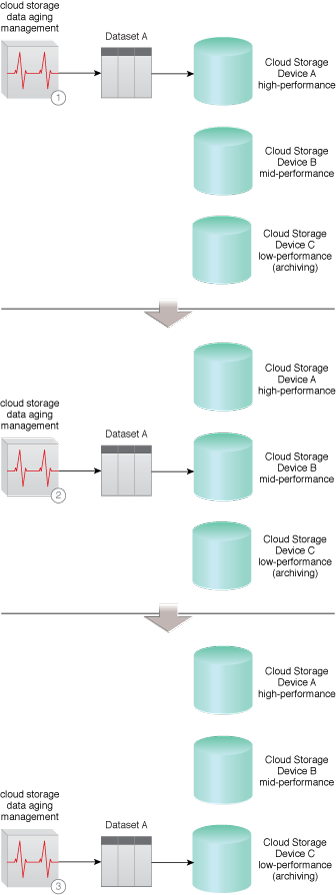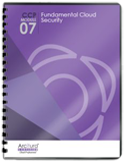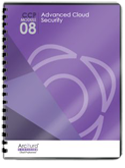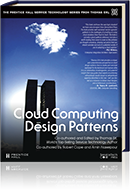Cloud Computing Patterns, Mechanisms > Mechanisms > C > Cloud Storage Data Aging Management
Cloud Storage Data Aging Management

A data management lifecycle can be defined for different types of data or datasets, and each dataset may need to be stored on different cloud storage devices according to each respective lifecycle requirement.
A cloud storage data aging management mechanism automates the movement of datasets between different cloud storage device types in an automated, policy-driven fashion, according to the lifecycle for each dataset.
A cloud service consumer can be provided the required interfaces to define a data lifecycle. Based on the lifecycle, policies can be defined by service consumers.
As depicted in Figure 1:
- Cloud Storage Devices A, B, and C have different performance baselines and pricing.
- Over time, a cloud consumer’s dataset may experience changes in availability, performance, and accessibility requirements as part of the customer’s data lifecycle.
- The cloud storage data aging management mechanism can leverage other cloud storage mechanisms to move Dataset A to other cloud storage devices without impacting the service or its availability.

Figure 1 – A data aging management mechanism can manage the transfer of data between Cloud Storage Devices A, B and C, as demonstrated.
This mechanism is covered in CCP Module 7: Fundamental Cloud Security and
in Module 8: Advanced Cloud Security.
For more information regarding the Cloud Certified Professional (CCP) curriculum, visit www.arcitura.com/ccp.
The architectural model upon which this design pattern is based is further covered in:
Cloud Computing Design Patterns by Thomas Erl, Robert Cope, Amin Naserpour
(ISBN: 9780133858563, Hardcover, ~ 528 pages)
For more information about this book, visit www.arcitura.com/books.


